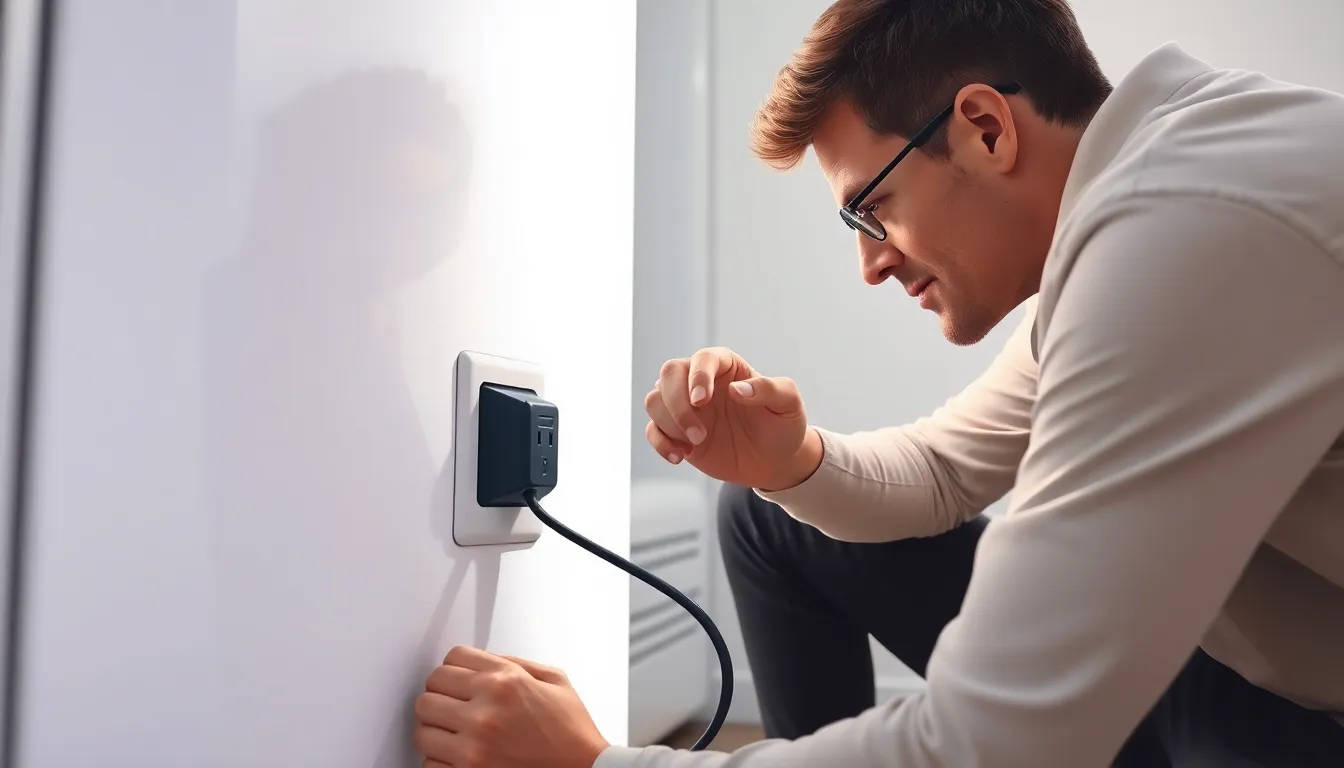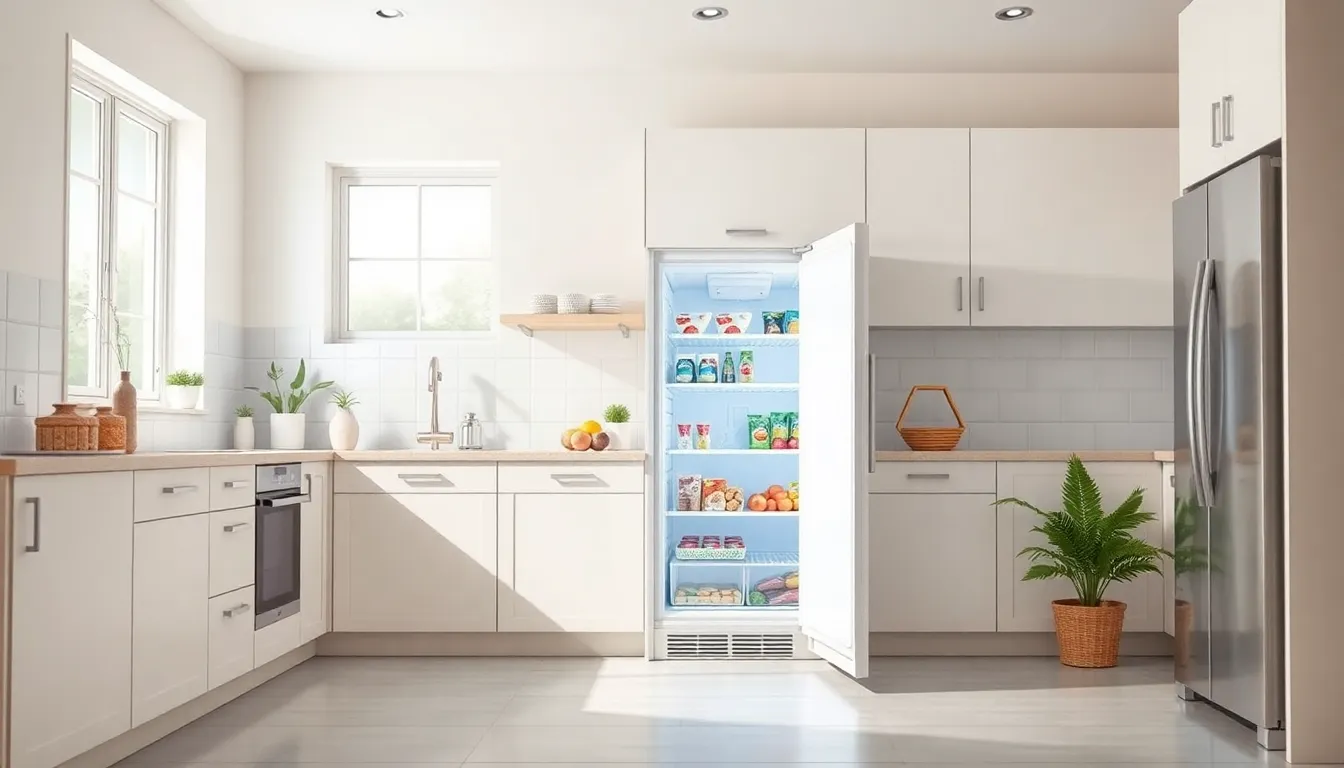Table of Contents
ToggleWhen the freezer turns into a not-so-cold storage unit, panic can set in faster than ice cream melts on a hot day. It’s a chilling dilemma that leaves many scratching their heads and frantically Googling solutions. After all, who wants to say goodbye to their beloved frozen pizza or that stash of emergency ice cream?
Understanding why a freezer isn’t freezing can save the day—and your groceries. From pesky power issues to a build-up of frost that could rival a winter wonderland, the culprits are often easier to fix than they seem. So, let’s dive into the frosty depths of this frosty fiasco and uncover the reasons behind your freezer’s sudden rebellion.
Common Reasons Why My Freezer Is Not Freezing
Several factors can lead to a freezer not freezing properly. Understanding these common issues helps in diagnosing and resolving the problem quickly.
Temperature Settings
Incorrect temperature settings are often a primary cause of a malfunctioning freezer. Most freezers require a temperature setting of 0°F (-18°C) for optimal performance. Verify the thermostat control to ensure it’s set correctly. If the setting is too high, the freezer may not freeze items effectively. Adjust the temperature gradually, checking back every few hours to see if performance improves.
Door Seal Issues
Damaged or dirty door seals can cause cold air to escape, resulting in insufficient freezing. Inspect the seals around the freezer door for cracks, tears, or grime. Tight seals help maintain the internal temperature. Cleaning the seals with mild soap can improve their effectiveness. If defects are present, consider replacing the seals to enhance efficiency.
Air Flow Blockage
Air circulation plays a crucial role in a freezer’s cooling capacity. Blockages can occur due to overloading the freezer or frost buildup on cooling coils. Ensure there’s adequate space between items for air to flow freely. If frost accumulates, defrost the freezer to restore normal operation. Regularly checking for blockages helps maintain consistent temperatures throughout.
Diagnosing the Problem

When a freezer isn’t freezing, identifying the root cause is essential to restore functionality. Several simple checks can help pinpoint the issue.
Checking the Power Supply
First, confirm that the freezer is plugged into a working outlet. A tripped circuit breaker or blown fuse could interrupt power supply. Assessing the outlet with another device can verify its functionality. If the outlet works, investigate the power cord for damage or fraying. Sometimes, extension cords can’t handle the freezer’s power needs, which may lead to problems. If everything checks out yet the freezer remains silent, consider testing the thermostat.
Inspecting the Condenser Coils
Condenser coils play a crucial role in a freezer’s cooling mechanism. Start by locating the coils, usually found at the back or beneath the appliance. Dirt or dust accumulation on these coils can hinder performance. Cleaning them with a brush or vacuum removes buildup and improves efficiency. If the coils are clean but the freezer still struggles, examine the airflow around the appliance. Ensuring a few inches of space for proper ventilation fosters optimal cooling. Regular maintenance of condenser coils can prevent freezing issues from arising in the first place.
Solutions to Fix a Non-Freezing Freezer
Fixing a freezer that isn’t freezing involves several straightforward steps. Each solution addresses potential issues for optimal results.
Adjusting Temperature Settings
Check the thermostat control first. Freezers must be set to 0°F for maximum efficiency. If the setting reads higher, the unit won’t freeze items properly. Next, make minor adjustments, allowing about 24 hours for the temperature to stabilize. Confirm the thermometer inside shows the correct temperature, ensuring effective cooling. Avoid opening the door frequently, as this raises internal temperatures, affecting overall performance.
Cleaning the Freezer
Dirt and debris block airflow in a freezer. Start with removing all items and unplugging the unit. Next, focus on cleaning the interior surfaces using a mixture of warm water and mild detergent. Rinse thoroughly after scrubbing. Additionally, clean the condenser coils located at the back or underneath the appliance, as dust buildup inhibits heat exchange. Regularly maintaining these areas enhances cooling efficiency and prevents future freezing issues.
Repairing or Replacing the Door Seal
Inspecting the door seal is crucial. If it appears cracked or damaged, cold air escapes, resulting in inadequate freezing. First, perform a visual check, then conduct a simple dollar bill test. Close the door on the bill; if it slips out easily, the seal requires attention. Repairing small tears with silicone sealant may suffice. However, replacing the entire seal ensures a complete fix. Both actions contribute to maintaining temperature consistency and energy efficiency.
When to Call a Professional
Recognizing when to seek professional help is crucial for addressing freezer problems effectively. Certain signs indicate that a major issue exists, which may require expertise.
Signs of a Major Issue
Sudden temperature fluctuations can signal a significant problem. If the freezer is running continuously without achieving the correct temperature, that may indicate a malfunctioning compressor. Strange noises often accompany severe issues; these sounds can suggest mechanical failures. Additionally, if food consistently spoils or ice builds up unnecessarily, professional assistance is advisable. It’s important to note that persistent moisture inside the freezer can also suggest underlying complications. Ignoring these signs might lead to costly repairs or replacement down the line.
Understanding Repair Costs
Repair costs vary significantly depending on the issue’s complexity. Simple fixes, such as replacing a door seal, generally cost less than $100. More complicated problems, like compressor or condenser repairs, often exceed $400. Calling a technician usually incurs a service fee, typically ranging from $50 to $100. Regular maintenance can help prevent these expenses, ensuring the freezer operates efficiently. Always obtaining estimates from multiple repair services aids in making informed decisions. Failing to address significant issues promptly can lead to higher repair costs in the future.
A malfunctioning freezer can be frustrating but understanding the potential causes can help in resolving the issue quickly. By checking temperature settings inspecting door seals and ensuring proper airflow one can often restore freezing capabilities without much hassle.
Regular maintenance is key to preventing future problems and ensuring optimal performance. If simple troubleshooting doesn’t yield results it may be time to consult a professional to avoid further complications. Keeping an eye on signs of major issues can save time and money in the long run. With the right approach most freezer problems can be effectively managed.




